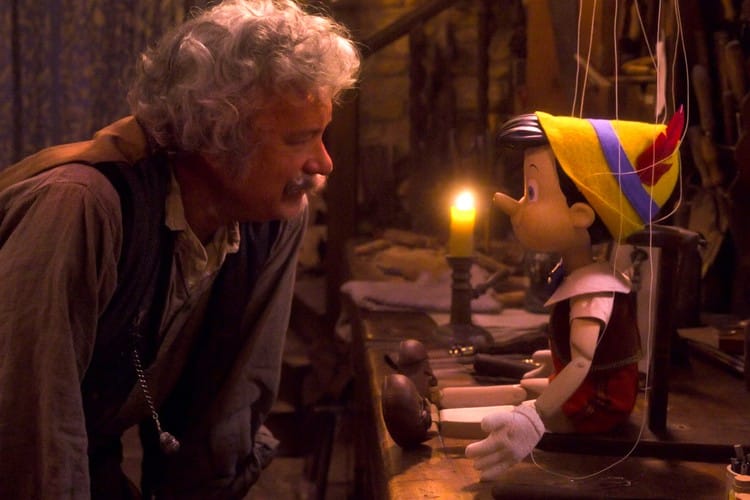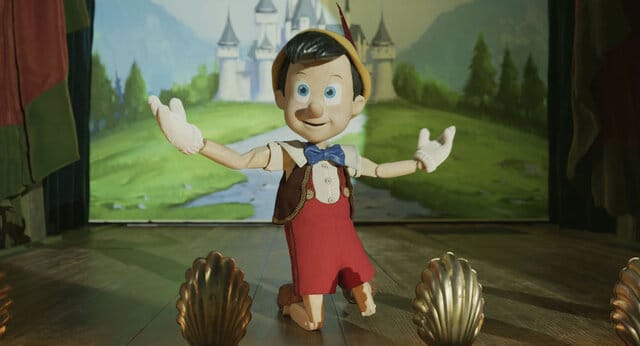Read also:
How to Watch FX Live Without CableHow To Watch AMC Without CableHow to Watch ABC Without CableHow to Watch Paramount Network Without CableThe strings of the past and present tangle up this misguided remake of an animated classic.
Pinocchio is not a movie. It’s the latest in a long line of live-action remakes of classic Disney cartoons. The Mouse House’s newest excuse to print money can’t be reasoned with. It doesn’t feel pity, or remorse, or fear. And it absolutely will not stop… ever, until you are dead! Or until it only has Pocahontas and Home on the Range left to turn into live-action features, whichever comes first. If the track record of movies like The Lion King and Alice in Wonderland isn’t enough to make you discouraged about the prospects of Pinocchio, it’s worth remembering that this is also a Robert Zemeckis directorial effort made after 2001.
This filmmaker’s enormous contributions to blockbuster entertainment can never be erased and he’s still capable of occasionally churning out a solid movie, like Flight. But titles like The Polar Express and Welcome to Marwen have made the prospect of new Zemeckis movies something to dread rather than anticipate. Combining this director with a live-action take on one of Disney’s most beloved animated movies results in a production that goes about as well as you’d expect, though you might be surprised by how lethargic the entire enterprise is.
After some irritating opening meta-dialogue from narrator Jiminy Cricket (Joseph Gordon-Levitt), Pinocchio focuses its gaze on woodcarver Geppetto (Tom Hanks) creating a little puppet boy named Pinocchio. This isn’t just a new toy, but rather a stand-in for the child Geppetto lost years earlier. After wishing on a star that his puppet could be a living breathing boy, The Blue Fairy (Cynthia Erivo) appears to make that desire a reality. Pinocchio (Benjamin Evan Ainsworth) is now a real wooden boy, and one who will need Jiminy Cricket to serve as his conscience.
Coming to life may have been a miracle, but that was only the first step on Pinocchio’s journey. To become “a real boy,” he must exhibit characteristics that are brave, unselfish, and true. After trying and failing to get into school, Pinocchio thinks he’s found a way to live up to those traits by becoming a performer for the wicked Stromboli (Giuseppe Battiston). This sets our puppet protagonist on a lengthy journey to explore all the ways a person’s life can go morally astray.

The first act of Pinocchio’s script, penned by Zemeckis and Chris Weitz, seems to be setting viewers up for something truly cringe-inducing. This part of the story has all kinds of inexplicable modern gags aimed at adults, like Honest John (Keegan-Michael Key) attempting to woo Pinocchio over to the life of an actor by invoking the name of Chris Pine and claiming he could be as famous as “an influencer.” Such jokes don’t fit a movie rooted in the 19th-century and largely trying to channel the straightforward fairy tale aesthetic of the original film.
This type of comedy gets more restrained once Pinocchio is ensnared by Stromboli, but this is also where the tediousness of the film becomes apparent. There’s a dissonance in the writing of Pinocchio, as Zemeckis and Weitz hew as closely as possible to the original 1940 film’s story structure while revamping the lead character to be as clean-cut and perfect as possible. The original Pinocchio was not a dark anti-hero, but he could mess up, be impulsive, or act like a real flawed kid.
In this version, Pinocchio is a passive figure jostled around by other people to places like Stromboli’s circus or Pleasure Island. When the puppet gets to the debauchery of the latter location, he doesn’t even do anything wicked beyond sipping some root beer. There’s no coming-of-age character arc to drive the plot, nor have the screenwriters come up with striking and new themes to hinge the script on. Without any room for this character to grow, there’s no dramatic tension in the storyline.
Even worse, Zemeckis and Weitz’s screenplay still wants to indulge in all the familiar set-pieces of the original Pinocchio movie. Without any of Pinocchio’s foibles around to give these sequences some thematic heft, though, they just ring as hollow echoes of the past. It’s all emblematic of a movie that functions as a mechanical recreation of old cinema that fails to understand why people got attached to these stories or images in the first place.

That absence of a pulse also infests the various musical numbers. Old standbys like “When You Wish Upon a Star” and a handful of new tunes penned by Glenn Ballard and composer Alan Silvestri are handled in an incredibly awkward fashion. Characters will often sing only a few lines of their respective songs and then, suddenly, these set-pieces are over as soon as they begin. No bombast or fun here in the song-and-dance routines, Pinocchio is in too much of a hurry to check off a laundry list of familiar story beats.
Pinocchio is similarly lifeless from a visual perspective, though, credit where credit is due, Zemeckis’s fondness for injecting unabashedly scary images into PG-rated fare does result in some enormous creepy clown statues at Pleasure Island. Aside from those frightening flourishes, though, Pinocchio looks mostly unremarkable. Family movie cinematographer veteran Don Burgess brings little of note to his work here beyond a strange penchant for making nighttime scenes nearly impossible to see.
Even worse, the heavy use of CGI for almost all the main characters makes one wonder why we’re even doing a “live-action” remake in the first place. This is practically an animated movie anyway! Worse, its slavish adherence to the character designs of the original Pinocchio doesn’t even allow for interesting new visual interpretations of these iconic figures. The titular lead looks like the same puppet audiences saw in 1940, just with more realistic textures over his body. A lot of talented animators have been employed here to maintain continuity within the Disney canon, not indulge in their creative spirits by conjuring up new appearances for beloved protagonists. What a tragedy.
Amidst all the cartoon characters, though, is Tom Hanks as Geppetto. Taking a break from making better-than-expected Dad movies like News of the World, Hanks does inject some tangible pathos into the yearning and kind-heartedness of this woodcarver. Leave it to an actor of Hanks’ caliber to interact with a lifeless CGI Pinocchio and still conjure up recognizable human emotions. Tragically, he’s nowhere near prominent enough in Pinocchio to make much of a difference. Even an actor as consistently talented as Hanks can’t stave off the lifeless aura that sinks this new family movie. Caught between rigidly recreating the original animated classic and apparently not comprehending what made it a classic to begin with, Pinocchio should be forgotten about as quickly as so many other live-action Disney remakes.
Pinocchio is now streaming on Disney+.